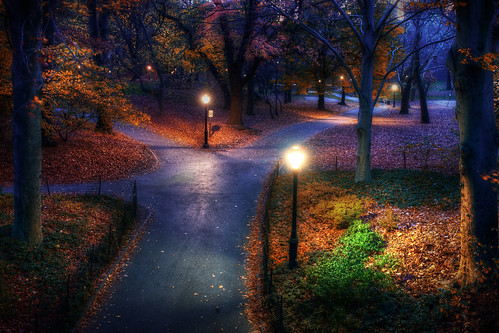
cc licensed ( BY NC SD ) flickr photo shared by Stuck in Customs
I have learned so much about how to create a more engaging slide show presentation completing this subject. I now have an in-built fear of bullet points for example. I understand what it means for a picture to be 'CC' (and no, it has nothing to do with corn or chips). I am able to get photos from Flickr, and to attribute them correctly. I understand the impact a single picture can have, and how that can be enough visual stimulation to make a point at times, particularly if you have something important to say while your audience gazes at it. I have learned that a white background is actually the most effective, as it will work in any environment, and will make your information stand out more clearly. I know to keep the colour scheme simple (for my presentation I have chosen to use three colours - blue, purple and pink - to fit with the picture of my title page, and feel concerned that this is getting carried away). I know to not put too much information into a presentation - to limit it to three main ideas. I know not to put too much information on one slide.
I am finding it difficult, however, to fit my presentation with all of these recommendations when I am limited to twelve slides. I am sitting here wanting to fill a slide with a picture that illustrates a simple point that I wish to make, but instead I need to fit three points onto the one slide. How then do I make that slide attractive? I know white is the best background colour if you are going to have one, but I'd rather not have to have it visible on every slide. If there is anyone out there who can give me some advice on which direction I could/should take, that would be much appreciated.
